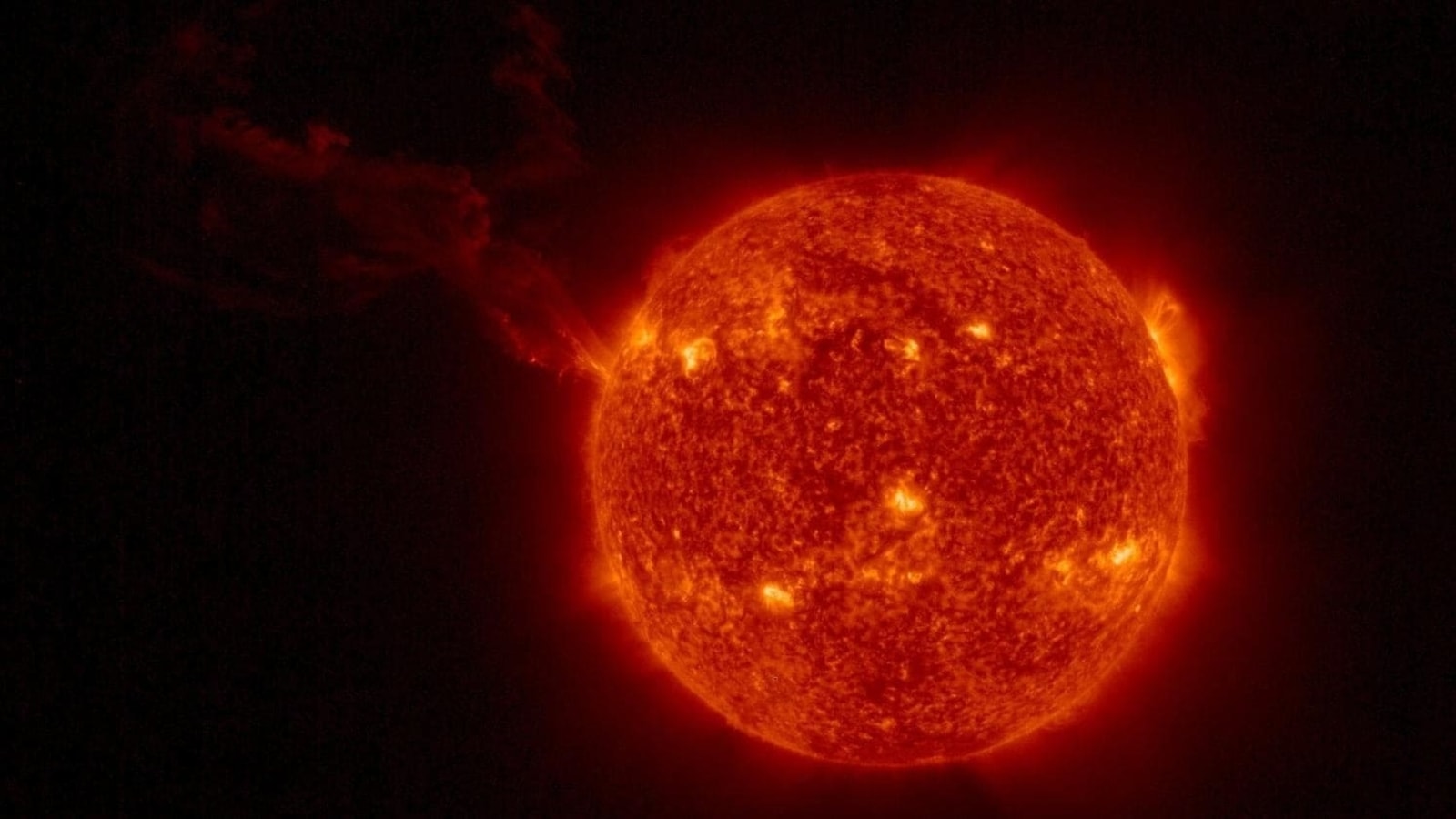Solar storm fury! Multiple solar flare explosions cause nonstop BLACKOUTS on Earth
Sunspot complex AR3293-3296 has turned unstable and has been crackling with strong solar flares. The strong ultraviolet radiation from the eruptions has resulted in rolling series of blackouts on Earth. Is another major solar storm coming?






 View all Images
View all ImagesThe minor geomagnetic storm, which was supposed to be sparked by multiple coronal mass ejections (CMEs), has passed us by without causing much concern. However, a new development on the Sun has begun troubling the Earth. A sunspot complex including AR3293, AR3294, AR3295, and AR3296 has turned unstable and is crackling with solar flares. These flares have been erupting incessantly and as a result of the intense ultraviolet (UV) radiation, a rolling series of radio blackouts have been caused on Earth. Find out if another solar storm is likely.
According to a SpaceWeather report, “Sunspot complex AR3293-3296 is crackling with strong M-class solar flares--six of them today so far. Pulses of extreme UV radiation are causing a rolling series of shortwave radio blackouts around the dayside of Earth. Loss of signal has been greatest over Africa where ham radio operators may have noticed fade-outs at all frequencies below 30 MHz”.
Blackouts plague the Earth
The continuous solar flare eruptions have resulted in a strange phenomenon where the Earth has experienced a rolling series of shortwave radio blackouts. As the Earth rotates, the part of the globe that is directly in front of the sunspot complex suffers the brunt of the UV radiation and blackout. The worst impact of it is seen on drone pilots, aviators, and ham radio operators. Even some emergency units use it for communications in areas without mobile networks.
Another fear is that the solar flare eruptions could pave the way for a major solar storm, like the terrifying one we saw on April 23. These multiple flare eruptions can release enough CME clouds in space that can they can merge together and develop into a powerful solar storm causing wave.
The early detection of the M-class solar flares was done by the NASA Solar Dynamics Observatory, which constantly monitors the Sun for such incidents.
Tech behind NASA Solar Dynamics Observatory
The NASA Solar Dynamics Observatory (SDO) carries a full suite of instruments to observe the Sun and has been doing so since 2010. It uses three very crucial instruments to collect data from various solar activities. They include the Helioseismic and Magnetic Imager (HMI) which takes high-resolution measurements of the longitudinal and vector magnetic field over the entire visible solar disk, Extreme Ultraviolet Variability Experiment (EVE) which measures the Sun's extreme ultraviolet irradiance, and Atmospheric Imaging Assembly (AIA) which provides continuous full-disk observations of the solar chromosphere and corona in seven extreme ultraviolet (EUV) channels.
Catch all the Latest Tech News, Mobile News, Laptop News, Gaming news, Wearables News , How To News, also keep up with us on Whatsapp channel,Twitter, Facebook, Google News, and Instagram. For our latest videos, subscribe to our YouTube channel.





























